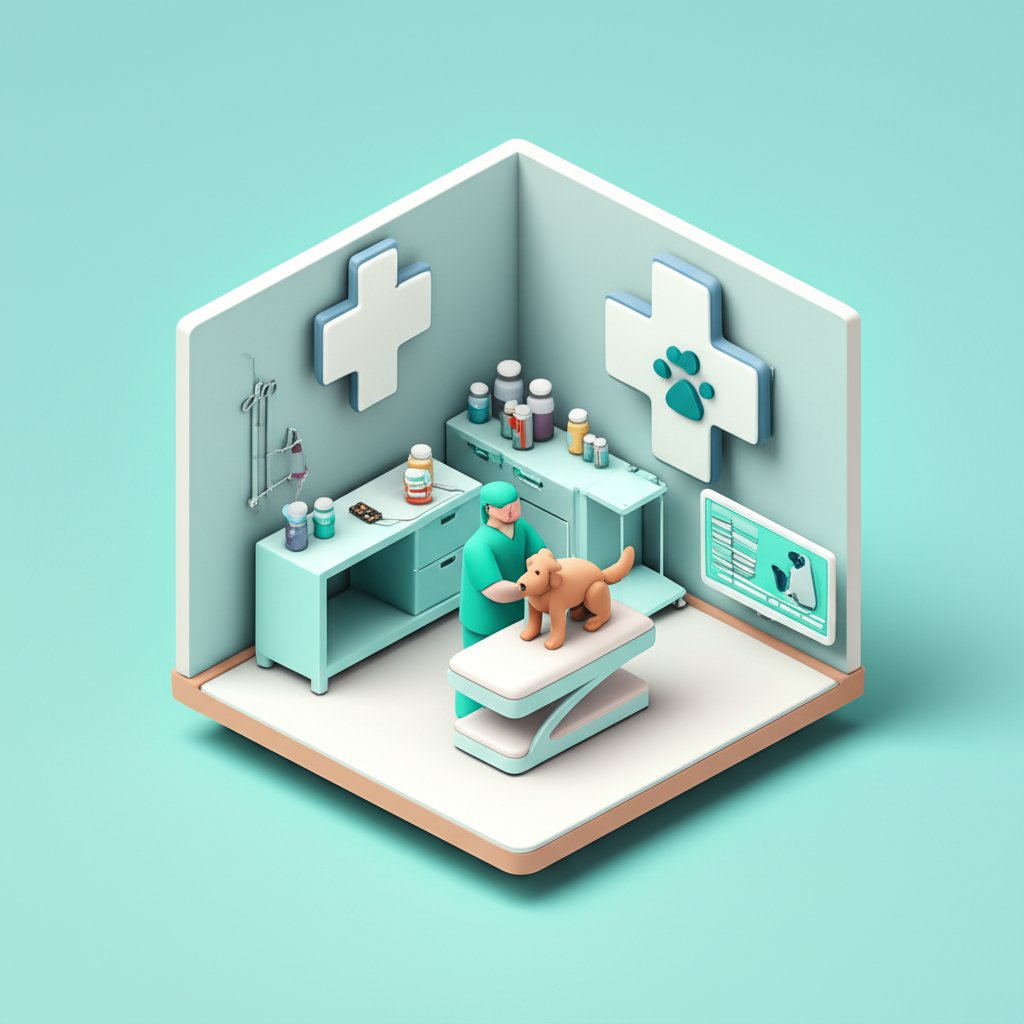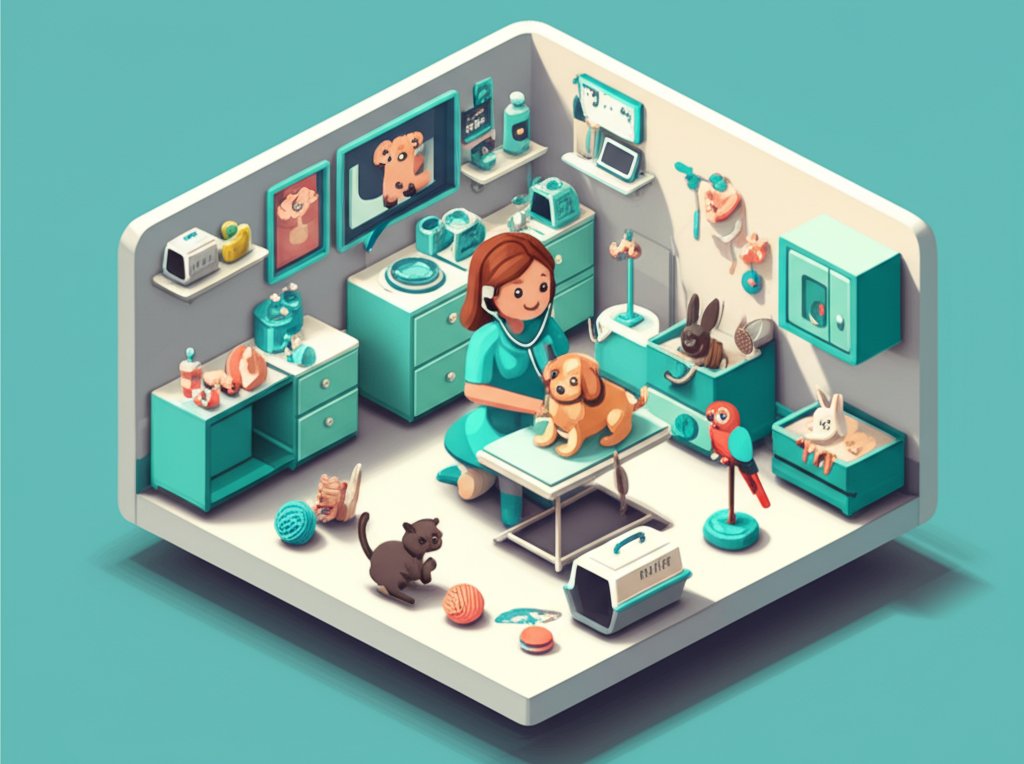Ever wondered about the dedicated individuals who safeguard the health of our beloved animal companions, from the smallest hamster to the largest horse? The world of veterinarians is a fascinating landscape of science, compassion, and tireless dedication. But here’s a compelling fact about vets that might surprise you: the veterinary profession has seen a dramatic demographic shift, with women now forming the vast majority of its ranks. Did you know that a significant percentage of practicing veterinarians today are women?
This article will embark on an insightful journey, unraveling the most amazing facts about vets, delving deep into the reasons behind this remarkable transformation in the veterinary profession, and highlighting the diverse, demanding, and incredibly rewarding world of animal care. Prepare to have your perceptions challenged and your understanding broadened as we explore the dynamic forces shaping modern veterinary medicine.
Exploring the intriguing world of veterinary medicine reveals not only the dedication required for animal care but also some surprising facts, including insights found in this article about veterinarians secrets.
The Rise of Women in the Veterinary Profession: A Deep Dive into “Why?”
The demographic landscape of the veterinary profession has transformed dramatically over the past few decades. Once predominantly male, the field is now overwhelmingly female. In the United States, for instance, a significant 68% of actively practicing veterinarians are women, a trend that is even more pronounced in veterinary school enrollment, where female students constitute over 80%. This isn’t just a casual observation; it’s a profound shift with multi-faceted explanations.
Historical Context: A Dramatic Shift in Demographics
For centuries, veterinary medicine was largely a male-dominated field, often associated with agricultural work and physical labor involving large animals. Women began entering veterinary schools in larger numbers in the 1970s and 80s, driven by shifting societal roles, increased access to higher education, and a growing passion for animal care. This exponential growth continued, leading to the current female majority, signaling a significant evolution in both gender roles and educational opportunities.
The Nurturing Hypothesis: Empathy and Connection in Animal Care
One widely discussed theory attributing the rise of women in the veterinary profession centers on innate qualities often associated with women: empathy, compassion, and a nurturing instinct. While these traits are certainly not exclusive to any gender, the demanding emotional labor inherent in animal care – dealing with sick or injured animals, comforting worried pet owners, and making difficult end-of-life decisions – might resonate strongly with individuals possessing a deep capacity for emotional connection. This allows female vets to often excel in building trust and rapport with both their patients and their human companions.
Academic Excellence and Accessibility: Breaking Down Barriers
The path to becoming a veterinarian is incredibly rigorous, demanding high academic achievement. Women have increasingly excelled in science, technology, engineering, and mathematics (STEM) fields, consistently demonstrating strong performance in the prerequisite courses required for veterinary school. As admissions processes become increasingly merit-based, focused on academic records and personal statements rather than traditional biases, women have naturally risen to the top of competitive applicant pools, gaining access to the demanding degree programs necessary for the veterinary profession.
Flexibility and Diverse Opportunities within the Veterinary Profession
Beyond traditional clinic roles, the veterinary profession now offers an incredibly diverse range of specializations and career paths, from public health to research, zoo medicine to corporate roles. This breadth of opportunity may appeal to a wider demographic, including individuals seeking roles that can potentially offer different levels of flexibility or intellectual engagement throughout various life stages. While the profession remains demanding, the variety of roles in animal care may present adaptable career trajectories.
Challenging Stereotypes and Inspiring New Generations
The visibility of successful female veterinarians has created a powerful ripple effect. Young girls growing up today see women in leadership roles, performing complex surgeries, and managing bustling animal care clinics, challenging outdated stereotypes and inspiring them to pursue their own passions in science and medicine. This positive feedback loop continues to attract more women to the field, solidifying their dominant presence and ensuring a diverse future for the veterinary profession.
Beyond the Clinic: Diverse Roles Shaping the Modern Veterinary Profession
While many picture vets primarily treating beloved dogs and cats in a local clinic, the reality of the veterinary profession is far more expansive and dynamic. The scope of animal care extends into numerous specialized areas, each vital for animal health, public safety, and even global well-being. Understanding these diverse roles reveals even more fascinating facts about vets.
Companion Animal Practitioners: Everyday Heroes of Pet Health
The most common image of a veterinarian is often that of a companion animal practitioner, caring for small pets like dogs, cats, birds, and small mammals. These vets are the frontline healthcare providers for our furry, feathered, and scaled family members, performing everything from routine vaccinations and wellness checks to complex surgeries, dental procedures, and advanced diagnostics. Their role is deeply personal, requiring not only medical expertise but also exceptional communication skills to educate and comfort pet owners.
Large Animal & Production Veterinarians: Guardians of Livestock
Beyond domestic pets, many veterinarians dedicate their careers to large animals, including horses, cattle, pigs, and poultry. These vets often work in rural settings, traveling to farms and ranches to provide health services. Their work is critical for herd health, preventing and treating diseases that could impact entire populations, ensuring humane animal care for livestock, and playing a key role in food safety and the agricultural economy. This aspect of the veterinary profession is incredibly hands-on and often involves managing complex animal populations.
Public Health & Zoonotic Disease Detectives: Protecting Both Animals and Humans
One of the most critical, yet often unseen, facts about vets is their indispensable role in public health. Veterinarians are often called “disease detectives” because they are at the forefront of identifying, monitoring, and controlling zoonotic diseases – illnesses that can spread from animals to humans. Examples include rabies, avian flu, Lyme disease, and West Nile virus. This work embodies the “One Health” concept, recognizing that the health of people, animals, and the environment are interconnected. Vets in this field work for government agencies like the USDA, CDC, and state health departments, safeguarding national biosecurity and global health.
Research, Academia, and Industry Roles: Innovating Animal Care
Many veterinarians work outside of clinical practice entirely, dedicating their skills to research, teaching, and industry. These vets are instrumental in developing new vaccines, treatments, and diagnostic tools that advance animal care for all species. They conduct clinical trials, study animal behavior, investigate disease pathogenesis, and push the boundaries of veterinary science. In academia, they train the next generation of veterinarians, while in industry, they might work for pharmaceutical companies, feed manufacturers, or animal health technology firms.
Specialized and Exotic Animal Vets: A World of Unique Challenges
For those fascinated by the truly unique, some veterinarians specialize in exotic animals, wildlife, or even aquatic species. This very specialized area of the veterinary profession requires extensive knowledge of diverse physiologies and behaviors, from treating a lion at a zoo to rehabilitating an injured eagle or caring for fish in an aquarium. These vets often play crucial roles in conservation efforts, protecting endangered species and managing wildlife populations.
Emergency and Critical Care Veterinarians: Life-Saving Expertise
In high-stakes situations, emergency and critical care veterinarians provide immediate, intensive animal care for pets facing life-threatening conditions. Working in specialized emergency clinics, they manage trauma cases, acute illnesses, and post-surgical complications, often working long, unpredictable hours. This demanding specialty requires advanced medical skills, quick decision-making, and incredible resilience.
The Rigorous Path to Becoming a Veterinarian: High Grades and Unwavering Dedication

The journey to becoming a veterinarian is one of the most intellectually demanding career paths, requiring not just a passion for animal care but also exceptional academic prowess and an unwavering commitment. Aspiring vets must navigate a competitive landscape, proving their capabilities at every stage. These facts about vets highlight the intensity of their educational and professional development.
Pre-Veterinary Education: Building a Strong Scientific Foundation
Before even applying to veterinary school, prospective veterinarians must complete an undergraduate degree, typically a Bachelor’s of Science (B.S.), with a heavy emphasis on core science subjects. Prerequisites often include advanced biology, chemistry (organic and inorganic), biochemistry, physics, and calculus. Most veterinary schools require a minimum GPA, but successful applicants often boast GPAs significantly higher, with the average GPA for veterinary school admission frequently around 3.54 or higher, emphasizing that high grades are indeed crucial. Beyond academics, extensive hands-on experience with animals, through volunteering, shadowing vets, or working in animal care settings, is equally vital for admission.
Veterinary School: The DVM Journey – Four Years of Intensive Study
Once admitted, students embark on a four-year Doctor of Veterinary Medicine (DVM) program, one of the most comprehensive and challenging doctoral degrees available. The curriculum is incredibly broad, covering:
The later years of veterinary school are dominated by intensive clinical rotations, where students apply their theoretical knowledge in real-world settings, gaining practical experience in various animal care specialties under the guidance of experienced veterinarians.
Beyond Academics: Essential Skills for a Well-Rounded Veterinarian
While high grades open the door, a successful veterinarian requires a broad set of complementary skills:
Vets must effectively communicate complex medical information to worried pet owners, explain treatment options, and provide empathetic support. They also need to collaborate seamlessly with colleagues and staff.veterinary profession demands emotional fortitude to handle challenging cases, client grief, and the innate desire to provide the best animal care despite obstacles.animal care relies heavily on technology – digital imaging (X-rays, ultrasound, MRI), electronic health records, sophisticated monitoring equipment, and cloud-based applications for practice management. Veterinarians must be proficient in utilizing these tools.Specialization and Lifelong Learning: Continuing the Journey
Upon graduating with a DVM, many vets pursue further post-doctoral training, such as internships and residencies, to become board-certified specialists in areas like surgery, cardiology, oncology, dermatology, or ophthalmology. Regardless of specialization, ongoing continuing education is a mandatory aspect of the veterinary profession, ensuring vets stay abreast of the latest advancements in animal care and maintain their licensure. The commitment to learning is truly lifelong.
Unveiling the Realities: Challenges and Profound Rewards of the Veterinary Profession
Becoming a veterinarian is often viewed through rose-tinted glasses, fueled by a deep love for animals. While the veterinary profession is incredibly rewarding, it also comes with significant challenges that highlight the immense dedication and resilience required of these animal care heroes. Unpacking these realities provides a more holistic view of the facts about vets today.
The Emotional Toll: Compassion Fatigue and Mental Health in Animal Care
One of the most pervasive challenges in the veterinary profession is the emotional burden, often leading to compassion fatigue and significant mental health struggles. Veterinarians consistently experience elevated rates of stress, burnout, anxiety, and depression compared to the general population. They frequently face:
animal care decisions, and occasional client aggression.animal care due to client financial constraints or lack of resources.The constant exposure to suffering and the weight of responsibility can take a severe psychological toll, making mental health support and self-care crucial for veterinarians.
Financial Realities: Educational Debt vs. Compensation
The rigorous education required to become a veterinarian comes with a substantial financial cost. Veterinary school tuition is often comparable to human medical school, leading to significant student loan debt upon graduation. While veterinarian salaries are respectable, they often do not match the earning potential of human medical doctors, exacerbating the financial pressure on new graduates. This economic reality can be a source of stress and can influence career choices within the veterinary profession.
The Demands of the Job: Long Hours and Emergency Calls
Life as a veterinarian is rarely a 9-to-5 job. Emergency clinics operate 24/7, and even general practitioners may be on call, facing unpredictable schedules and long hours. The physical demands can also be significant, involving handling large or fractious animals, performing intricate surgeries, and standing for extended periods. This constant readiness and physical exertion are demanding facts about vets that are often overlooked.
The Constant Evolution: Adapting to New Techniques and Technology
The veterinary profession is constantly evolving with new medical discoveries, diagnostic technologies, and treatment modalities. Vets must commit to lifelong learning, regularly attending conferences, workshops, and continuing education courses to remain competent and provide the highest quality animal care. This requires a significant investment of time and resources, adding another layer of demand to an already challenging career.
The Profound Rewards: The Joy of Healing and Making a Difference
Despite these challenges, the veterinary profession offers immense and profound rewards that drive veterinarians to continue their vital work. These include:
Vets literally save lives, improve animal welfare, and contribute directly to public health and food safety, making a significant impact on society.The veterinary profession is a testament to the human-animal bond, upheld by dedicated individuals who navigate immense challenges to deliver unparalleled animal care.
Conclusion
The veterinary profession is a rich tapestry woven with passion, expertise, and profound dedication. We’ve discovered amazing facts about vets, including the striking demographic shift that sees women dominating the field, driven by a blend of historical context, academic excellence, and perhaps an innate connection to animal care. We’ve journeyed beyond the typical clinic, exploring the diverse and critical roles vets play in public health, research, and safeguarding species around the globe.
The path to becoming a veterinarian is undeniably rigorous, demanding high grades, years of intensive study, and a unique blend of scientific acumen and empathetic communication skills. Yet, despite the emotional toll, financial pressures, and demanding hours, the rewards of healing, making a profound difference, and fostering the human-animal bond remain unparalleled.
The veterinary profession is not just a job; it’s a calling that profoundly impacts the lives of animals and humans alike. Next time you interact with a veterinarian, remember the incredible journey they’ve undertaken and the profound impact they have on animal care and indeed, on all of us.
FAQ

Q: Why are most veterinarians women?
A: The majority of veterinarians are women due to a combination of factors, including increased access to higher education for women, high academic performance in science fields, a perceived natural inclination towards nurturing and compassionate animal care, and the breaking down of traditional gender stereotypes in professional fields.
Q: What are some surprising facts about vets?
A: Many facts about vets are surprising, such as their critical role in public health by preventing zoonotic diseases (those transmissible from animals to humans), their diverse specializations beyond just companion animals (including large animals, exotics, research, and military roles), and the significant emotional and mental health challenges they face, including compassion fatigue.
Q: How challenging is veterinary school?
A: Veterinary school is exceptionally challenging, comparable in rigor to human medical school. It requires a four-year Doctor of Veterinary Medicine (DVM) degree following an undergraduate degree with extensive science prerequisites. The curriculum is broad and intense, covering numerous species and medical disciplines, demanding high grades and unwavering dedication.
Q: Do vets only treat dogs and cats?
A: No, veterinarians treat a vast array of animals. While many focus on companion animals like dogs and cats, the veterinary profession includes specialists for large animals (horses, livestock), exotic animals (reptiles, birds, small mammals), zoo animals, wildlife, and even aquatic species.
Q: What is “animal care” in the broader sense?
A: Animal care encompasses far more than just treating sick pets. In the broader sense, it includes preventative medicine, nutrition, welfare, public health initiatives (like zoonotic disease prevention), reproductive health, behavioral therapy, emergency medicine, surgical interventions, and environmental health, all aimed at the well-being of diverse animal populations.
Q: What is the “One Health” concept in the veterinary profession?
A: The “One Health” concept recognizes that the health of humans, animals, and our shared environment are inextricably linked. Veterinarians play a crucial role in this concept by monitoring animal diseases that could impact human health, ensuring food safety, and contributing to environmental conservation efforts, thus highlighting their broad impact beyond individual animal patients.
Q: What are the biggest challenges faced by veterinarians?
A: Veterinarians face numerous challenges, including high student loan debt, the emotional toll of compassion fatigue and euthanasia decisions, long and often unpredictable working hours, and the constant need for continuing education to keep up with advancements in animal care. Mental health issues, such as stress, anxiety, and depression, are also unfortunately prevalent within the veterinary profession.










